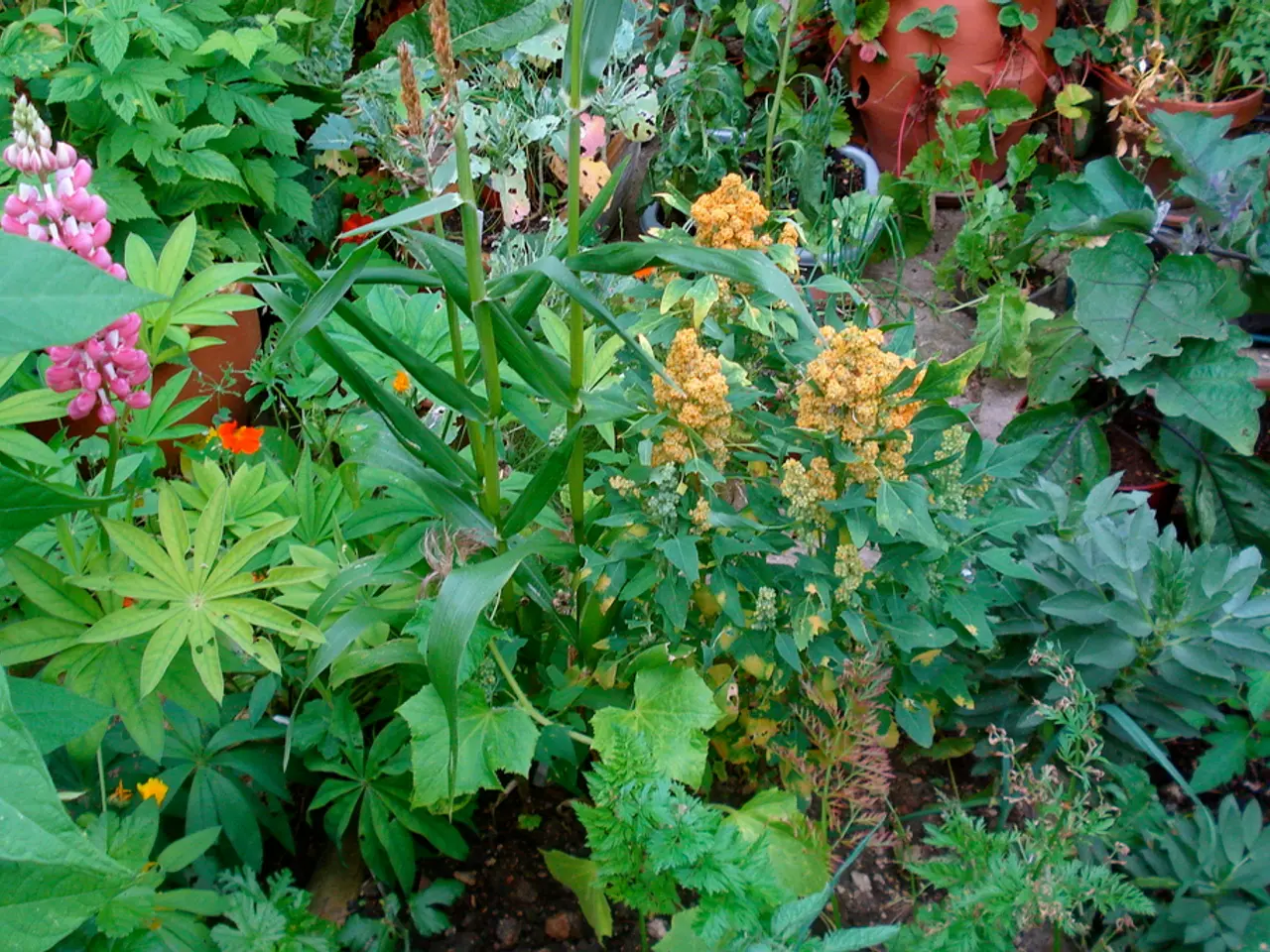Preparing Your Yard for Winter Cold
As the autumn leaves begin to fall and the days grow shorter, it's time to prepare your garden for the upcoming winter months. Here's a guide to help you get started:
Planting Garlic for Spring
In colder climates, plant garlic cloves four to six weeks before the ground freezes. In warmer regions, you can plant as late as January. This will ensure a bountiful spring garlic crop.
Preparing the Soil
For a successful vegetable garden, provide your plants with well-drained soil. Remove any plant debris, stakes, and trellises from sections of the garden not overwintering cold-hardy crops. Thoroughly weed the area to prevent unwanted growth.
Caring for Your Tools
Before storing your garden tools for winter, remove, sharpen, oil the blades, and scrape or rinse off built-up grass and dirt from metal tools. Clean wooden handles with sandpaper and rub in linseed oil.
Leaf Management
Rake up fall leaves and put them on the compost pile or use as mulch by raking the leaves into loose, low piles and running the lawnmower over them before gathering up the shredded leaves and spreading them on vegetable or flower beds. Straw or old hay also works well for mulching.
Wildlife Garden
Preparing a wildlife garden for the winter months involves cleaning out feeders, nest boxes, and ponds to provide both habitat and food for birds and other animals in the winter.
Potted Plants
Potted chrysanthemums should be moved to a sheltered spot, watered well, and covered with plenty of straw for the winter. Geraniums need to be kept well-watered leading up to dormancy, then moved inside to a cool place and water sparingly throughout the winter.
Dealing with Disease and Insect Damage
It's important to remove plant debris from the garden, compost healthy plants, and burn or dispose of those that show signs of insect damage or disease to prevent those problems from recurring next year.
Tender Perennial Bulbs
Tender perennial bulbs like dahlias, gladioli, and cannas require special treatment: when the first frost causes the leaves to yellow or blacken, cut back the foliage, carefully dig up the bulbs, and store them in dry peat moss or shredded paper in a cool, dark, humid place until spring.
Cold-Hardy Plants
Hardy greens and broccoli might appreciate row cover in colder regions. Cold-hardy plants like kale, spinach, garlic, winter carrots, and certain varieties of cabbage can be grown in a north-facing garden during winter.
Cover Crops
Cover crops like legumes, such as alfalfa or clover, can protect the soil and aid nutrient retention. Legumes have the added bonus of being nitrogen fixers, though grasses are easier to grow and can also function as windblocks.
Mulching
Mulch helps suppress weeds, retain soil moisture, prevent erosion, and encourage earthworms and other organisms to stay active longer. A three- to four-inch layer of compost or a one-inch layer of manure can be added to garden beds in the fall and gently worked into the soil with a broad fork or other digging fork.
Preparing Perennials
In colder areas, perennials need to be prepared for winter by watering less, cutting stems back to six inches from the ground, and mulching well with straw, shredded leaves, or wood chips.
Seed Planting
Spread seed while the soil is still warm and cover lightly with straw or hay. Fava beans can withstand temperatures as low as 14 degrees Fahrenheit.
Mower Maintenance
The fuel tank should be empty on the lawnmower, and the battery and spark plugs should be disconnected to prevent the mower from accidentally starting during the winter. Empty all outdoor containers and store them upside down before storing the mower for winter.
Cold Frame and Row Cover
It may be helpful to build a cold frame or set up row cover for extra protection for overwintering crops from the cold and pests. Most of these vegetables should be planted between midsummer and early fall, though garlic can be planted later. The garden soil should be covered with a thick layer of mulch or a cover crop to prevent erosion.
Growing Winter Vegetables
Some cold-hardy crops can be left in the ground all winter, such as beets, carrots, turnips, broccoli, cabbage, kale, mustard greens, spinach, fava beans, and garlic.
Read also:
- Wawa avian tests positive for West Nile disease
- Individuals suffering from ailments such as arthritis or asthma could potentially secure £30,000 in financial aid for home renovations at no cost to them.
- The market for Kraft Lignin is projected to increase at a rate of 7.2% each year until 2034.
- Revising hair care practices with cynorrhodon extracts for addressing hair fragility





